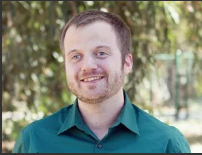Adam Schiff's Multi-Million Dollar Gamble to Secure His US Senate Seat Paid Off

Photo Credit: Gage Skidmore / Flickr
The US Senate race to fill the late Dianne Feinstein's seat will come down to a November contest between US Rep. Adam Schiff (CA-30) and former professional baseball player and Republican Steve Garvey -- an outcome Schiff paid millions of dollars to get.
The nonpartisan primary for Senate was more a race for who would come in second as Schiff established a dominant lead in the polls throughout the primary campaign cycle. The top contenders for second place were Garvey and Democratic US Rep Katie Porter (CA-47).
Under California's nonpartisan top-two primary, all voters and candidates participate on a single primary ballot, regardless of party, and the top two vote-getters advance to the general election. This could mean two candidates of the same party.
A November US Senate election in California is a foregone conclusion -- especially in a hotly contested presidential election year in which the top item on the ballot will go to the Democratic candidate by 3-4 million votes. A Democrat is going to win.
The unique position California is in is that non-presidential statewide races could pose the question: Which Democrat will win? What separates these Democrats? Who has appeal that goes beyond their party?
Just under half of the state's registered voting population is Democrat. The other half are No Party Preference, Republicans, and third-party voters. This means that in the event of a Democrat v. Democrat race, it's non-Democratic voters who will determine the outcome.
It can seem paradoxical, but in a state like California, a same-party general election provides more competition than an election with two or more parties involved -- because voters outside the dominant party have more power over the outcome.
It's something that is not lost on the parties -- or their campaigns, and there is no election system immune to political gamesmanship when campaigns find ways to work the system. The 2024 US Senate race is no exception.
Schiff concentrated his attack ads on Garvey, who struggled early on to garner attention from voters in his own party. He did not have the money or recourses to run statewide TV ads. So, Schiff ran ads for him.
Specifically, he put out ads that contrasted himself with Garvey. He criticized Garvey's conservative positions and record voting for Trump. The ads sold his GOP credentials to Republicans better than Garvey could.
Schiff also focused most of his attacks in the Senate debates on Garvey, rather than going after other top Democrats -- and the tactic worked. Before a single vote was cast, Garvey ran neck-and-neck with Porter in the polls as recently as February.
Porter criticized Schiff and accused him of "furthering his own political career, boxing out qualified Democratic women candidates, and boosting a Republican candidate to do it." But Porter was not above playing Schiff's game -- focusing her own ads on Republican Eric Early.
Schiff spent over a 11 million dollars targeting Garvey while Porter spent over half a million on Early. These are candidates that posed no threat to them in a statewide election, but if they could rile up enough Republican voters, they could affect the outcome of the primary.
And as it turns out -- a Republican campaign that initially struggled to get off the ground is now in the November election against Schiff, who is all but guaranteed to win.
One of the authors of California's nonpartisan top-two system, Steve Peace, recently published an op-ed on IVN in which he discussed the "clever" campaign games that arise even in nonpartisan electoral systems. He says it's time to build on the Top Two reform with more choice.
"It’s time for voters to have “More Choice,” and California can lead the way by embracing a top-four (or five) model," Peace writes.
Alaska voters approved a Top Four model in 2020. Four candidates advance to the general election, regardless of party, and voters use a ranked choice voting system to determine election outcomes. Nevada voters could implement a Top Five model with RCV in November.
Campaigns will always look for ways to game the system to their benefit, but the best way to limit their ability to manipulate outcomes is by ensuring control of elections resides with voters though nonpartisan elections. Adding more choice is the logical next step.
 Shawn Griffiths
Shawn Griffiths


